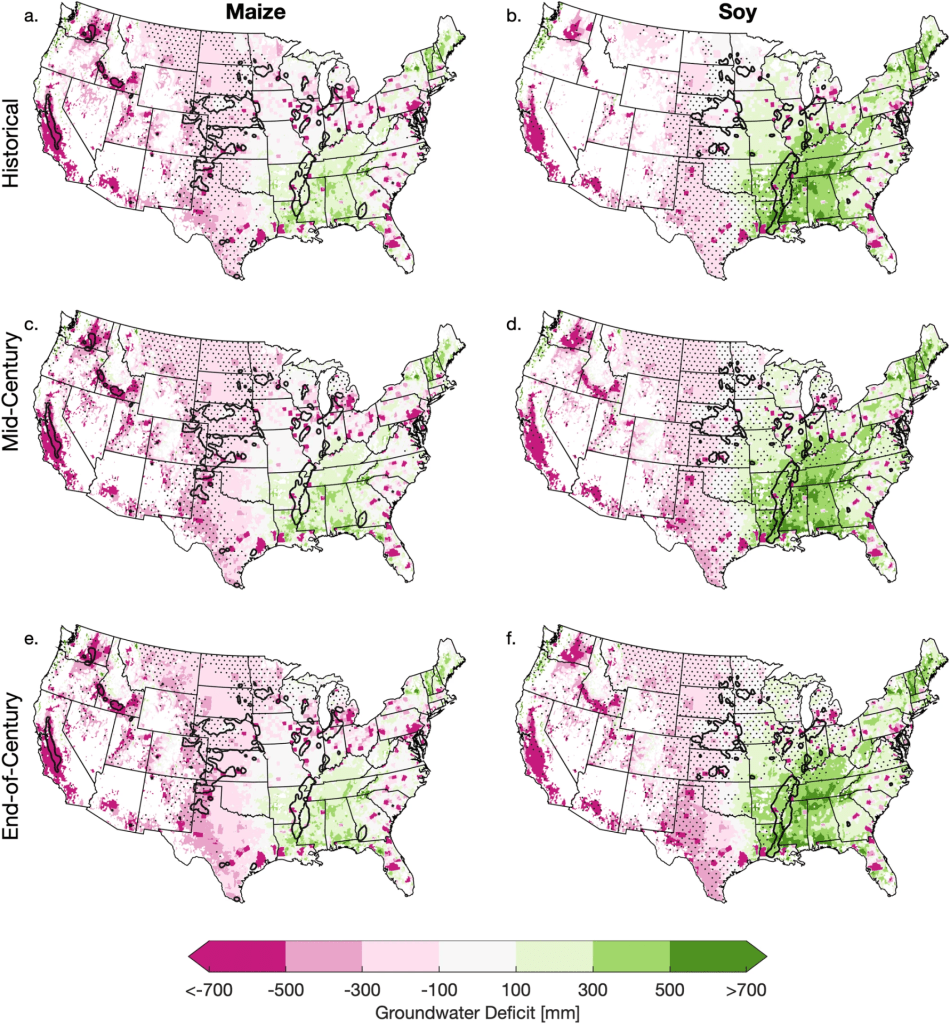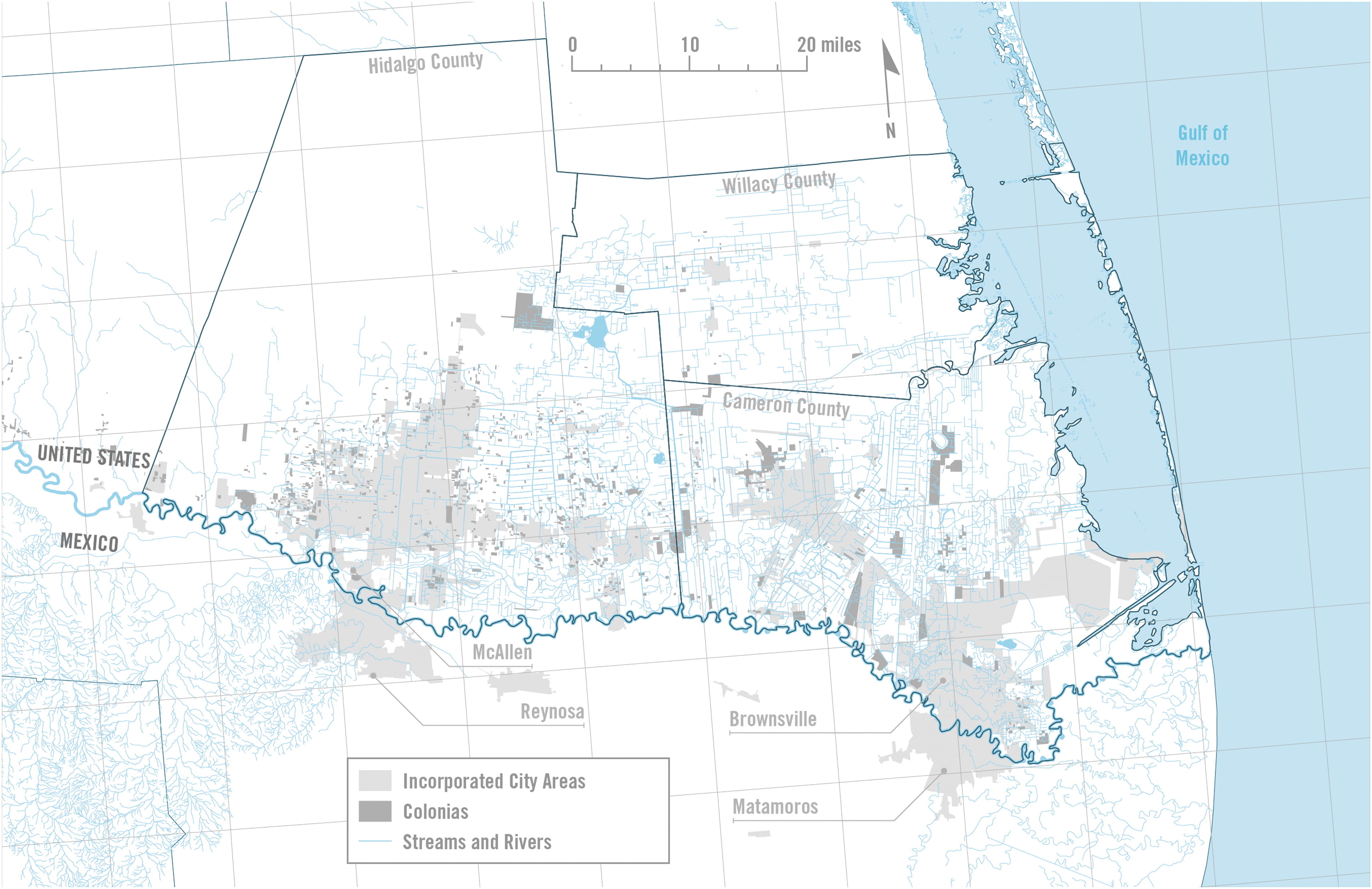With 38 public universities and 35 private colleges and universities in the state and many more across the country (and the world) interested in Texas, there’s a great deal of academic scholarship focused on water in the Lone Star State. In this column, I provide brief summaries of several recent academic publications on water in Texas.

Let’s start thinking about water!
Irrigation benefits outweigh costs in more us croplands by mid-century
A pal hooked me up with this paper, and I was instantly interested because of the climate change component and the nagging question, “Did these folks consider non-sustainable pumping in their analysis?” Using projections (SSP4.5 and 8.5) resulting in end-of-the-century temperature increases of 4 °C and 9 °C, the authors found that the economics of expanding irrigation exceed those of groundwater pumping and equipment costs.
Furthermore, higher temperatures will limit the range of corn production, likely to be replaced by more heat-tolerant soybeans. Sustainable production would require a switch to soybeans over corn, and the latter requires a lot more water. For Texas, the authors suggest that producers in East Texas will be more likely to irrigate with groundwater in the future than now.
Citation
Partridge, T., Winter, J., Kendall, A., Basso, B., Pei, L., and Hyndman, D., 2023, Irrigation benefits outweigh costs in more US croplands by mid-century: Communications Earth & Environment, 4:274, https://doi.org/10.1038/s43247-023-00889-0
Estimating future surface water availability through an integrated climate-hydrology-management modeling framework at a basin scale under CMIP6 scenarios
Dallas Skyline reflection on Trinity River during sunset in Dallas, Texas by nat693 – stock.adobe.com.
Shao and others looked at the Upper Trinity River Basin to investigate how climate change might affect the area’s firm reservoir yields. They found that:
- Temperatures and vapor pressure deficit (a decrease in humidity) are expected to increase, while precipitation and windspeed are expected to remain the same under SSP 4.5 and 8.5 conditions.
- Seasonal patterns of runoff are expected to change, especially during the fall.
- Gross lake evaporation is expected to increase by about 30% under both projections.
- Firm yields of reservoirs are expected to decrease by 14% and 17% for the SSP 4.5 and 8.5 scenarios, respectively.
Citation
Shao, M., Fernando, N., Zhu, J., Zhao, G., Kao, S.-C., Zhao, B., Roberts, E., and Gao, H., 2023, Estimating future surface water availability through an integrated climate-hydrology-management modeling framework at a basin scale under CMIP6 scenarios: Water Resources Research, 59, e2022WR034099. https://doi.org/10.1029/2022WR034099
Unincorporated and underserved—Critical stormwater infrastructure challenges in South Texas colonias
Map showing the location of the Lower Rio Grande Valley and the location of its colonias.
Rivera starts her abstract by noting that there is “no right to local governance in the United States,” a lack of which means that many rural residents in unincorporated areas do not have easy access to state and federal largesse to address water issues. Rivera’s study focused on colonias in the Lower Rio Grande Valley area and found that cost-benefit analyses “too frequently extinguish rural infrastructure initiatives” in support of incorporated areas despite clear local benefits. Unincorporated areas also suffer from not having a regional or state entity with resources to specifically address flooding in rural areas. Rivera notes that counties and extending extra-territorial jurisdictions could solve this governance gap.
Map showing the location of the Lower Rio Grande Valley and the location of its colonias.
Citation
Shao, M., Fernando, N., Zhu, J., Zhao, G., Kao, S.-C., Zhao, B., Roberts, E., and Gao, H., 2023, Estimating future surface water availability through an integrated climate-hydrology-management modeling framework at a basin scale under CMIP6 scenarios: Water Resources Research, 59, e2022WR034099. https://doi.org/10.1029/2022WR034099
Join Our Mailing List
Subscribe to Texas+Water and stay updated on the spectrum of Texas water issues including science, policy, and law.




